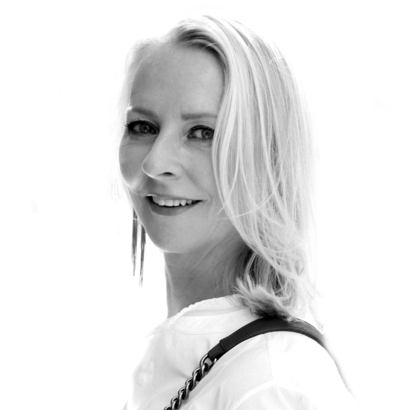Stop what you’re doing and run to the bathroom. Open every serum you own and pour them on your face. Don’t dillydally! These products are getting older by the minute and losing their potency, as old things tend to do.
The active ingredients in many of the skin-care products in most medicine cabinets might well be inert. Most of them start off as very stable geniuses, but they don’t all remain that way. As soon as they’re exposed to water, air, and light—essentially, life itself—they start to degrade. In as little as six months, they could be no more useful than a splash of very expensive, slightly discolored, smelly water.
“The best anti-aging products have an aging problem,” says Liz Whitman, the founder and C.E.O. of Exponent Beauty. Whitman set out to solve that problem first by measuring it. She asked an independent lab to test 25 of the top-selling clinical skincare products that use vitamin C, CoQ10, or retinol.
The chemists behaved like regular people, buying the products at a regular store, opening them again and again over time, the way a regular user would. Right off the bat, 60 percent of the products didn’t contain the concentrations necessary for efficacy, says Whitman. On average, she says, the products lost 40 percent of their active-ingredient concentrations in eight weeks.
Whitman’s idea was to ask people to pretend they were facialists, mixing formulas themselves right before they applied them. There was only one problem: “No one’s going to mortar and pestle ingredients in their bathroom,” says Whitman.
She worked with industrial designers to come up with a package that delivers an exact dose of powder and a precise amount of liquid hydrator that anyone could mix together in minutes with the tip of a finger.
Vitamin C, known for its skin-brightening, wrinkle-preventing properties, is a particularly troublesome skin-care ingredient, especially in a popular form, ascorbic acid. When an ascorbic-acid serum or cream sits in a warehouse for months and then lingers on a store shelf for another chunk of time, the water in the formula causes the vitamin C to decompose, according to Ginger King, a cosmetic chemist. By the time you open the bottle, the ingredients are already diminished. And from there, the decline is swift.
“The best anti-aging products have an aging problem.”
If you’ve ever bought one of these serums, you’ve probably witnessed their demise. As the formula decomposes, it turns from clear to orange to copper to brown, and acquires a tinny, swampy odor.
Skin-care formulators have a number of tricks to improve vitamin C’s stability, including adding vitamin E and ferulic acid to the mix, and packaging the liquid in opaque, brown bottles. But even these measures can’t protect the vitamin C for long.
Tiffany Masterson, the founder of Drunk Elephant skin care, worried about the integrity of her wildly popular C-Firma Serum. “I always felt bad about it,” says Masterson. “It needed to change.” So she did what few entrepreneurs would: she scrapped it. “It’s a moral issue for me at this point.”
Masterson and her chemists came up with a powder and a liquid base that, when shaken and sealed with a vacuum pump, would have a long and happy shelf life. The result, C-Firma Fresh Day, can hang around, unmixed, for three years. Once the powder and liquid are combined, the formula maintains its potency for one year.
Powdered active ingredients are the newest thing, and many of them come from South Korea, the skin-care capital of the world. The latest excitement is around freeze-drying. Mimi Kim, founder of a new line called Saro de Rúe, worked with chemists in Korea to take the freeze-dried hyaluronic acid used in wound healing and adapt it for skin-care purposes. Each hyaluronic-acid tablet comes in a blister pack that dissolves with eight drops of a liquid activator, creating a fresh, highly concentrated, preservative-free serum that delivers a form of hyaluronic acid that’s small enough to penetrate the skin but large enough to draw and hold moisture in the deeper layers.
“The signs of aging start as dry skin,” says Kim. “Then skin loses elasticity, and fine lines and dullness set in. All of these issues are related to hyaluronic acid. It’s not a trendy ingredient; it’s timeless.” In Korea, women and men regard flawless skin as “a symbol of nobility and grace,” says Kim. “Korean women and men, they’re extremely skin-care-savvy.”
A simple solution to the challenges of purity and potency is single-dose packaging. That’s what Noble Panacea, the skin-care line created by Sir Fraser Stoddart, who won the Nobel Prize in Chemistry in 2016, does.
Except that it’s not entirely that simple. In a speech introducing the concept, Stoddart said his technology “allows us to protect skin-care active ingredients at the molecular level … preserving their full potency until they are released later in a controlled and precise manner into the skin.” Each small sachet protects the retinol and antioxidants inside against degradation from light, oxidization, and bacteria, reducing the amount of preservatives.
Meanwhile, for those who aren’t Nobel laureates, there are a few measures that keep products from expiring quickly. Ginger King suggests refrigerating fragile serums, keeping them away from light, and making sure they’re tightly sealed. Don’t touch the dropper to your face, and don’t dip your bacteria-covered fingers in the jar. Instead, employ one of those twee spatulas or a basic cotton swab. Once the bottle is opened, don’t try to economize; use it liberally and often. And once the product is discolored or smells rancid, King suggests throwing it away, or doing what she does: “I use them on my legs.”
Linda Wells spent 25 years as Allure magazine’s founding editor in chief, served as Revlon’s chief creative officer, and currently consults and sits on the boards of several beauty and apparel companies


